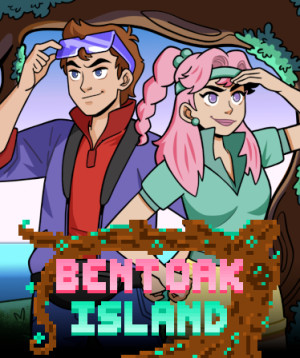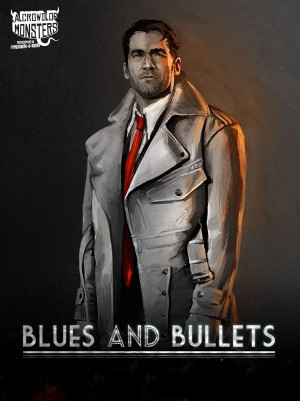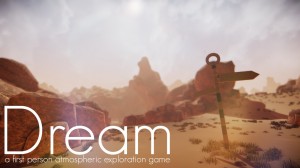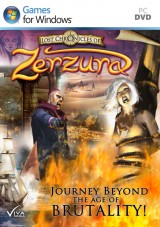Review for The Rivers of Alice

Alice is a dreamer, and her dreams are full of flowing things: rivers, waves, streaming clouds, molten lava. Unlike Lewis Carroll’s title character in Wonderland, this Alice’s dreams are charmingly pensive, daintily surreal and peopled with characters who never say a word. They contain difficult obstacles, like sealed rooms, a half-human spider and a troop of vultures, so time, brainstorming and patience are required. Though the story is vague and intrusive tutorial screens block the flow, the updated and re-released “Extended Version” of The Rivers of Alice is sufficiently novel and engaging to tempt those looking for an off-the-beaten-path experience.
The environments suit the template of an illustrated fable with a young girl as the heroine. They consist of muted, hand-painted images with a watercolor-like effect and lots of variety in the details and shapes. Ordinary locations like a courtyard, beach, and junk-filled basement contrast with their surreal occupants, such as a many-eyed monster, mirrors with live human feet, and monkey musicians. The world feels dreamy, strange and enticing, and despite the dangers its dicey inhabitants would appear to impose, it does not seem threatening. Each screen is beautifully animated: leaves float in a stream, waves lap the shore, seagulls fly, grasshoppers jump, a pendulum swings. Characters encountered along the way include a boy with his telescope, Muse with a lyre, and Athena with her cane. We never learn why these particular personalities show up in Alice’s dreams; their function is brief and their presence apparently random.
Wearing shorts and boots, Alice herself is constructed of lines without a smidgeon of color. Her walking animation is languid and her pony tail sways as she moves. She shows no emotion except when, at moments of puzzle-solving failure, she startles awake and then goes back to sleep. Alice doesn’t speak except to say “uh-uh” when refusing an action that you, the gamer, suggest. The game never tells you about her everyday life; the main link to reality is a necklace that releases glimmering dragonflies into the dreamscape. The narrative consists entirely of Alice moving onwards and upwards through trials and dark passageways and dream barriers.
When I first started playing The Rivers of Alice, it reminded me of the Samorost games. Both have an innocent, dreamlike ambiance, winsome animations, and characters that don’t communicate verbally. Once I started playing through the challenges, however, the similarities fell away. The experience isn’t as rigidly linear, and many of the puzzles in Alice are more difficult and time-consuming. They start out fairly easy, but become intense after the first hour. You’ll encounter two sound sequences that require you to match tones and recognize musical sequences. One conundrum is reminiscent of a board game; another that I found particularly enjoyable involved turning valves to route steam through pipes. Star gazing becomes a pattern challenge, as does a collection of seashells. Pixel hunting is necessary because hotspots can be very close together, making it easy to miss one. One particular puzzle-triggering hotspot is absent altogether.
The most frustrating challenge was a series of drag-and-drop sliding squares in which two of the rows always moved in tandem. I worked at this for an hour and then made the mistake of trying to save my game. This, as it turns out, saved progress up to – but not within – the puzzle. I tried again from scratch and was nearing victory when a slip of the mouse as I dragged the top row shut down the puzzle, resetting it yet again. After that, I threw in the towel and consulted the hint system. It turns out that the puzzle is solvable in a mere eight moves. I’m not sure why, but I found this curiously deflating.
There are a few timed puzzles, most of which aren’t too tricky once you know what you need to accomplish. The most dastardly is a tightrope-walking puzzle, where you have to move the mouse over and over again to avoid falling. My problem was finding enough room on my computer desk to move the mouse in the same direction multiple times. After the first ten tightrope failures, I cleared all the cups and remainders of snacks off my desk. This didn’t provide enough scope, so after the next ten tries, I cleared all the papers and books off my desk. After about fifty attempts, I finally figured out how to walk the tightrope to perfection. Plus I now have a very clean desk.
According to Arturo Monedero, the game’s designer at Delirium Studios, his main inspiration was the music of alternative rock band Vetusta Morla. The Spanish group’s soundtrack for The Rivers of Alice is unusual, featuring a folk guitar supplemented by harmonica and piano with contributions from other instruments I can’t even identify, plus exotic percussive sounds and brief vocals. The music is sometimes reflective and mystical, and at other times has a picaresque quality with a steady rhythm just right for a free-spirited jaunt. My favorite tune was “Un folio en blanco,” which stuck in my head with its lively beat and playful insouciance. Ambient sounds accompany and sometimes merge with the musical backgrounds, such as wind blowing, water dripping, footsteps plunking and steam hissing.
Though it aims to be philosophical, Alice doesn’t quite hit the mark. Plants topped by books instead of flowers sprout everywhere, sporting texts with symbolic sentiments. An early example: “The shore is a cage, all the fighting cocks, clubbed to death, a very Goyaesque vignette.” I happen to relish symbolism in games and can even tolerate a smattering of philosophy (as long as it doesn’t congratulate itself too often). But I never “got” where this game was going symbolically. Why mythological characters? Is Alice studying the classics? Why do the names of vices and virtues imprint themselves in the ground? Is this a hell-to-heaven climb based on sin and redemption? If so, why is sweet Muse stuck in the lower lava level, while the party of evil vultures plays a board game next to the heavens? It’s a mish-mash of tantalizing tendrils leading… nowhere. Though perhaps “nowhere” is the point. And the mere fact that the game has me asking these questions – does that mean its philosophy is precocious and provocative?
The Rivers of Alice uses a third-person perspective, and the PC version I played has a point-and-click interface. Three manual save slots supplement the autosave feature. The inventory resides at the top right of the screen, from which items can be dragged and dropped onto hotspots. Hovering over hotspots causes the smart cursor to change for the appropriate interaction when clicked. This game has an unusual way of communicating with the player. The supporting characters, for instance, speak only in pictograms. Several of these drawings are often presented at once, inside rectangles at the top of the screen. They are sometimes easy to understand, and other times are downright confusing. Clicking on them usually brings up Alice’s notebook with more detailed drawings, which can clarify or motivate but might also cause further confusion.
The most ubiquitous communicator is Sloth – a giant snail with a human face – who functions as both a tutorial and hint system. He appears every time the game transitions from one screen to another, giving advice that ranges from commonsensical to obtuse. An example of the latter: “You might need to go back more than once, if you feel lazy. You won’t always get the solution on the first try.” (So NOT feeling lazy means that I WILL get the solution on the first try?) These Sloth screens continued throughout the entire six-plus hours I spent with The Rivers of Alice. The game actually encourages a second visit, providing dragonfly hints after the finale for extras that can be accessed the next time through. Bonus gameplay includes the chance to play a sidescroller on a tiny in-game computer, in which you leap over carts (not worth a replay) and a disco dancing sequence with new music (I was glad I replayed to see it). By the time I completed the game a second time (which took only an hour and a half) I could quote the Sloth screens from memory. This tedious repetition is an odd choice – in a game where so much is flowing, placing a tutorial wall between every location is astoundingly counterproductive. Almost… lazy.
Outside the tutorial screens, Sloth lives on the bank of the river near Alice’s bed, and you can walk back to talk to him and view his puzzle hints. Since many of the challenges in The Rivers of Alice are tough, you are likely to avail yourself of Sloth’s helpful services at one time or another. He often gives multiple hints for the harder puzzles, and these are graduated, but since they are pictorial in nature and require interpretation, sometimes the later hints give less away than the early ones. However, usually the last hint in the series is an outright spoiler. Sloth is (after Alice) by far the busiest character in the game. He’s the exact opposite of a slacker. So after my first playthrough, I dispensed with calling him “Sloth” and started to think of him as “Nudge.”
The ending puzzle sequence in The Rivers of Alice is characteristically difficult (I finally solved the rotating rings by moving them randomly) and its outcome makes little narrative sense. It is also imaginatively merged with the credits, featuring a catchy victory ballad and an unusual juxtaposition of deftly hand-painted, animated graphics, photographs and acknowledgements. Everyone is credited; nothing is explained. You will either find it wildly original or ultimately unsatisfying. In my case, I gyrated back and forth between the two. In a symbolic, mildly philosophical way, this describes my reaction to the entire game.
WHERE CAN I DOWNLOAD The Rivers of Alice
The Rivers of Alice is available at:
We get a small commission from any game you buy through these links (except Steam).Our Verdict:
A journey down The Rivers of Alice brings winsome sights, innovative music, and intricate puzzles, but the philosophical waters are deceptively shallow without much story cohesiveness or character development.


























